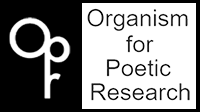- No products in the cart.
[Note from the Editors: The Minotaur in the Anthropocene is a digital artwork designed to be explored via zooming in and out, panning and scrolling. Please click on the image above for an enlarged version, or right click to download and explore with your computer’s image viewing software.]
Excerpt of an email exchange between Adam McAlpine Clark and the OPR:
OPR: Thanks for your submission to PELT… Since we publish PELT in print and on the web, it would be no problem to make a note… [explaining] that you intend the image as a digital artwork to be explored through zooming and scrolling, etc.
[…]
Not that it matters to our publication decision process, but it would be nice to be able to place this piece into some kind of a context. Could you tell us something about yourself and your work in general? Or anything more about this particular piece?
AMC: I’m delighted to hear that you’re interested in accepting my piece… So, I am currently studying environmental and human rights law and policy, with a focus on biological and cultural extinction and sustainable development. This piece draws on those commitments, as well as my interests in sexuality. I’ve always liked the idea of the minotaur being a sympathetic figure and the protean forces in general as such, vis-a-vis the folk ontological territorialization of Classical Greece over its atavistic antecedents. This piece attempts to take that as a motif to extend to conflicts between indigenous cultures and globalization in an attempt to evoke the Northern (global North) domination of nature and indigenous cultures. The dead hunter figure is drawn in more primitive line work than the cosmonaut, for example, the minotaur itself is a headless monster with a mask tethered to its neck and, indeed, is a constructed hermaphrodite, with its penis and testicles made out of wood and ribbon. These choices also reflect my own position as a white male artist. The anthropocene is both about extinction—cultural and biological—as well as as a kind of uncanny valley of nostalgia, where we cry over reproductions: a dodo bird in a museum that bears only a claw worth of actual bird, a few words drawn on paper of language gone, scores of third genders extinguished, etc. I tried to take all of that and make it personal.
I hope that is helpful, if not a bit long-winded and obtuse.
OPR: Not at all.

